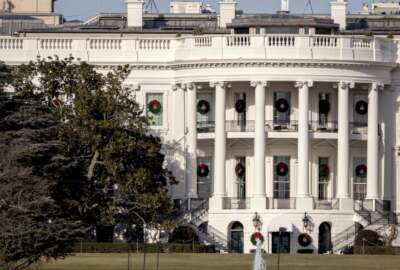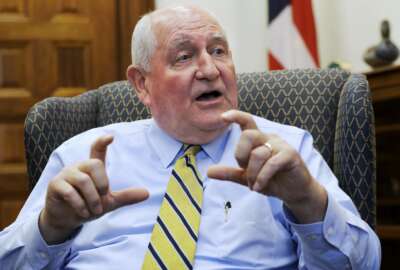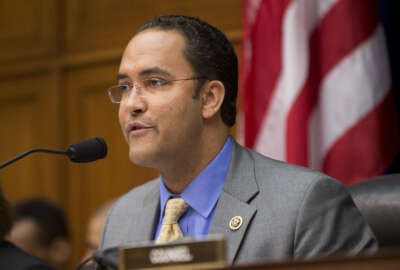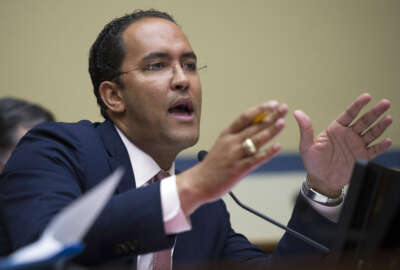 Exclusive
Exclusive Executive order aims to breathe life into stagnant CIO authorities
President Donald Trump signed an executive order Tuesday in an effort to build institutional capabilities to drive IT modernization.
Twenty-two years after the Clinger-Cohen Act, almost 16 years after the E-Government Act, and two-plus years after the Federal IT Acquisition Reform Act, the Trump administration believes it can solve the chief information officer authority challenge.
President Donald Trump signed an executive order Tuesday in an effort to build institutional capabilities to drive IT modernization and bring the government into the modern era when it comes to managing technology and people.
“Any large-scale enterprise transformation, you need to do it in stages and as you do each stage, you build change capacity for the next stage,” said a senior administration official during a briefing with reporters. “In order to create that long-term change capacity, you need to build the foundation and you need to do it in a very systematic and progressive fashion. There are about seven or eight change capability strategies that we follow and this is one. This is a foundational step in a multi-year journey. We are creating not only progress by doing this, but pre-condition for even more significant progress.”
Officials said the Defense Department will be exempted from the requirements.
A second senior administration official said DoD is exempted because it has a unique situation and governance structure.
For the rest of the civilian agencies, the official said the executive order will fix a systemic governance issue.
“The executive order impacts the reporting structure so that CIOs become the senior technical adviser at the agency. It gives them a seat at table so they can manage that agency’s technical infrastructure in the truest sense of the word,” the official said. “It gives them the hiring authority to bring in the technical talent that we know is out there, that we know is willing to serve, but is too often frustrated by the process of hiring and we hope that this will address that. It also prioritizes the use of shared services across the government. We are changing the structure so that we have a modern enterprise, which we hope therefore will leverage modern technology.”
The order requires CIOs to report directly to the head of the agency and serve as the lead adviser “in all annual and multi-year planning, programming, budgeting, and execution decisions, as well as in all management, governance and oversight processes related to IT.”
The president also is charging agency secretaries and leaders to
- Eliminate unnecessary IT management functions;
- Merge or reorganize agency IT functions to promote agencywide consolidation of the agency’s IT infrastructure, taking into account any recommendations of the relevant agency CIO; and
- Increase use of industry best practices, such as the shared use of IT solutions within agencies and across the executive branch.
Additionally, the order tells agency leaders that they “shall ensure that the CIO shall be a member of any investment or related board of the agency with purview over IT, or any board responsible for setting agencywide IT standards. The head of each covered agency shall also, as appropriate and consistent with applicable law, direct the CIO to chair any such board. To the extent any such board operates through member votes, the head of each covered agency shall also, as appropriate and consistent with applicable law, direct the CIO to fulfill the role of voting member.”
“President Trump understands CIOs have an important role at their agencies to drive results, and this executive order furthers their ability to be mission enablers in providing the quality service not only to their federal agency but to the American people,” Suzette Kent, the federal CIO, said in a statement.
A third senior administration official said the executive order will ensure the CIOs can drive agencies toward the goals outlined in the President’s Management Agenda.
“This creates the momentum we need moving forward,” the official said.
Trey Hodgkins, the senior vice president of public sector for the IT Industry Council, applauded the president’s actions.
“ITIC welcomes the administration’s continued focused on IT modernization. Strong leadership and executive support are needed to evolve and transform the way the government invests in IT,” he said in a release. “The executive order from the Trump Administration announced today puts CIOs in a position to effectively drive this IT modernization across the federal government and fully implement the Clinger-Cohen Act and the FITARA Act.”
Changes since the draft EO from January
The Trump administration initially drafted this executive order in December, making it the fourth administration to try to address the challenges around giving CIOs more authority.
In 1996, Congress passed and President Bill Clinton signed the Clinger-Cohen Act, which codified the role of the CIO. In 2002, President George W. Bush signed the 2002 E-Government Act into law, further clarifying those requirements.
In August 2011, OMB further addressed CIO authorities, focusing on commodity IT purchasing.
President Barack Obama signed FITARA into law as part of the 2015 Defense Authorization bill, and former federal CIO Tony Scott issued implementation guidance in June 2015.
Despite these efforts, agency progress with FITARA, particularly with CIO authorities, has been inconsistent. In the latest FITARA scorecard, three agencies, including DoD, received an “F” grade on the CIO authorities section, and 12 CIOs still do not report to the secretary or deputy secretary of their agency.
“One of FITARA’s foremost goals is to enhance the duties of agency chief information officers to ensure better management and coordination of IT investments. Since FITARA was enacted, my colleagues on the Oversight and Government Reform committee and I have held semiannual hearings to track agency implementation of the law. We have consistently found that agencies were hesitant to have CIOs report to the secretary or deputy secretary of the agency, that agency CIOs did not have adequate visibility into their agency’s IT budgets, and were often not adequately involved in the management and governance of IT investments until critical problems arose,” said Rep. Gerry Connolly (D-Va.) in a statement. “This executive order builds on the foundation established in FITARA, addresses vacancies in federal IT sector that hinder agency IT efforts and sets a path for better management of IT acquisition.”
Latest CIO News
Connolly said he was disappointed DoD is not covered under the EO.
He said DoD “is the one agency that consistently receives a failing grade on the FITARA scorecard. I urge the department to take a good look at the Executive Order and FITARA as guidance of the department’s own IT acquisition and management.”
Several agencies have gotten a head start on the executive order. The Agriculture Department reduced the number of people with the title CIO to 1 from 22. The Navy consolidated its CIO function into the undersecretary of the Navy.
The Interior Department reduced the number of its CIOs and gave its main CIO more authority over spending in 2010.
This attempt is different
The second administration official said there are several reasons why this executive order is different than previous attempts.
First, the official said, an executive order carries the weight of the White House and tells secretaries that this is a priority.
“The difference is it actually implements some of the authorities passed by Congress. There are aspects of what we are doing today that were in Clinger-Cohen or FITARA that were never implemented,” the official said. “I’m optimistic this is an organizational structure that will make a difference.”
The official added that previous efforts, too often, were “one-off solutions” to a crisis or in pursuit of “shiny objects,” things that were important, but didn’t deal with the root causes.
“I believe that the collection of authorities that we are leveraging from Clinger-Cohen, FITARA, other pieces of legislation and that we are creating ourselves through the EO addresses many of those root causes that have been discussed for decades,” the official said.
Copyright © 2024 Federal News Network. All rights reserved. This website is not intended for users located within the European Economic Area.
Jason Miller is executive editor of Federal News Network and directs news coverage on the people, policy and programs of the federal government.
Follow @jmillerWFED
Related Stories








